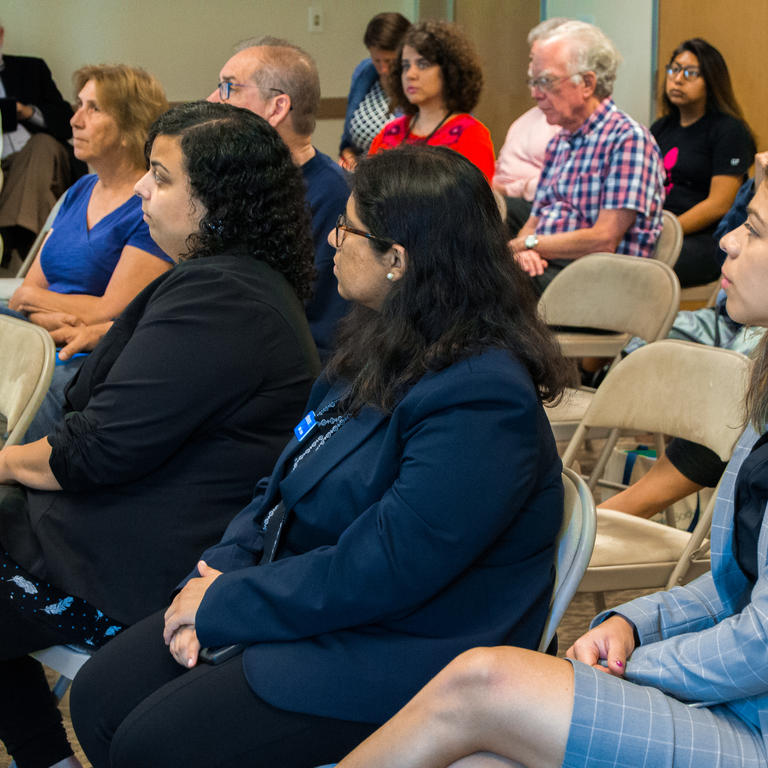A research center of the
UCR School of Public Policy

ICSD's Final Report 2022
About this Report:
 California is widely known for its high cost of housing and living, which is largely the result of the inability for new housing production to match the state’s population growth. Since 1970, California has experienced an extended and increasing housing shortage. This shortage has been estimated to be 3-4 million housing units (20-30% of California’s housing stock) and by 2018, California ranked 49th in the United States in terms of housing units per resident (McGhee et al., 2021; U.S. Census, 2017). With housing costs now well above the national average and a worsening homelessness problem (Levin, 2022), housing challenges have ever increasingly become more significant to voters and policymakers alike. The number of Californians able to purchase a median-priced home continues to shrink. The Inland Southern California Region is not immune from the statewide housing crisis. Housing production is not keeping up with population growth, 41.5% of households in the region are housing cost-burdened where they spend more than 30% of their income on housing (Kimberlin, 2019), and the Inland Region is the third most overcrowded region in the United States as of 2019 (Cox, 2021). The region ranks in the top 10 among the most populous Metropolitan Statistical Areas (MSAs) of households with high energy burdens, further exacerbating affordability for many
California is widely known for its high cost of housing and living, which is largely the result of the inability for new housing production to match the state’s population growth. Since 1970, California has experienced an extended and increasing housing shortage. This shortage has been estimated to be 3-4 million housing units (20-30% of California’s housing stock) and by 2018, California ranked 49th in the United States in terms of housing units per resident (McGhee et al., 2021; U.S. Census, 2017). With housing costs now well above the national average and a worsening homelessness problem (Levin, 2022), housing challenges have ever increasingly become more significant to voters and policymakers alike. The number of Californians able to purchase a median-priced home continues to shrink. The Inland Southern California Region is not immune from the statewide housing crisis. Housing production is not keeping up with population growth, 41.5% of households in the region are housing cost-burdened where they spend more than 30% of their income on housing (Kimberlin, 2019), and the Inland Region is the third most overcrowded region in the United States as of 2019 (Cox, 2021). The region ranks in the top 10 among the most populous Metropolitan Statistical Areas (MSAs) of households with high energy burdens, further exacerbating affordability for many
This report builds upon ICSD’s previous research on the region’s housing affordability and socioeconomic landscape. In the previous year, we profiled the Inland Region’s housing stock, examined housing construction trends, and reviewed the implications of statewide policies. ICSD’s research culminated with the August 2021 release of our annual report titled “Regional Challenges and Opportunities for Housing Development in Inland Southern California”(ICSD, 2021), which expanded on the ongoing conversation and research encompassing the Inland Region’s substantive housing challenges, including, regional affordability, the jobs-housing imbalance, and rising unattainability of housing needs. To further our research on this topic, in this report we examine the consequences of having an insufficient housing supply that fails to accommodate the region’s growing population.
Download the Report Here.
How to Cite this Report:
Inland Center for Sustainable Development (ICSD). (2023). Housing & Sustainability in the Inland Region: Affordability, Equity, & Changing Demographics. Riverside, CA: University of California Riverside.
Report Overview by Section:
-
Section 2: Sustainability
Not unlike environmental and energy issues, housing reform can also be approached from a sustainability standpoint. In Section 2, we re-examine the traditional concept of “sustainability” and explore how economic and social dimensions of policy affect the formation and existence of sustainable housing. We define sustainable housing as housing that can meet the current needs of a growing population that additionally has the infrastructure to adequately serve future generations; at the same time, sustainable housing should promotes social mobility, is affordable to residents, has minimal environmental impact, and ideally, is located in opportunity-rich communities with access to jobs and amenities. We also look at the extent that policies can contribute and support sustainable housing. In this section, we ask:
- Why is it important to consider all facets of sustainability?
- What have we learned from historical policies that did not approach land use issues with sustainability in mind?
- How have some modern policies incorporated sustainable policy design?
-
Section 3: Affordability, Equitability, and the Changing Demographics of the Inland Region
In Section 3, we examine the state of housing affordability within the Inland Region by identifying discrepancies between existing housing stock that is affordable to low-income households, and the realistic availability of these units to low-income households. We define this variance between the supply and demand as an affordability mismatch. Furthermore, we delve into the extent to which households are housing cost-burdened, and how neighborhoods are evolving and the effects of residential inequality. In this section, we ponder on the following questions:
- Do renters and owners experience similar patterns of affordability mismatches?
- Which jurisdictions have the highest/lowest affordability mismatch indices?
- What common characteristics do jurisdictions with low supply of affordable and available housing units share?
- How has the Inland Region’s socio-demographic profile changed through the decades?
-
Section 4: Continuing Effects of COVID-19
Section 4 examines how COVID-19 continues to impact the Inland Region. Overcrowding in homes, which we define for the purposes of this section as a household having more than two people residing in a bedroom, is one of the issues we explore. Since overcrowding affects susceptibility to illnesses, ability to telework, and the academic performance of children, for example, we study the characteristics of overcrowded households and the racial and ethnic disparities of those experiencing overcrowding. Additionally, because COVID-19 has put many small businesses at risk of closing, we look at the spatial distribution of financial aid from the Paycheck Protection Program (PPP). The Paycheck Protection Program is a Small Business Administration (SBA) backed loan program that helps businesses retain their workforce during the COVID-19 pandemic. We examine the characteristics of small businesses that received PPP loans and observe the geographical distribution of PPP loans at the neighborhood level. In this section, we address the following questions:
- What common characteristics are shared by overcrowded homes?
- How prominent of an issue is overcrowding in the Inland Region compared to the rest of Southern California, the state, and the nation?
- Has telework transformed our work and home lifestyles?
- What are some common characteristics shared by small businesses that received PPP loans?
- Which neighborhoods received PPP loans?
- What were some of the shortcomings of the PPP loan program?
-
Section 5: Conclusion & Policy Implications
Section 5 provides a conclusion to this report. In this conclusion, we discuss the topics studied this year, and offer a brief overview of our recent publications. We additionally consider the interrelationships between the sustainability issues that we explored throughout this report, and how those are related to creating sustainable housing.












